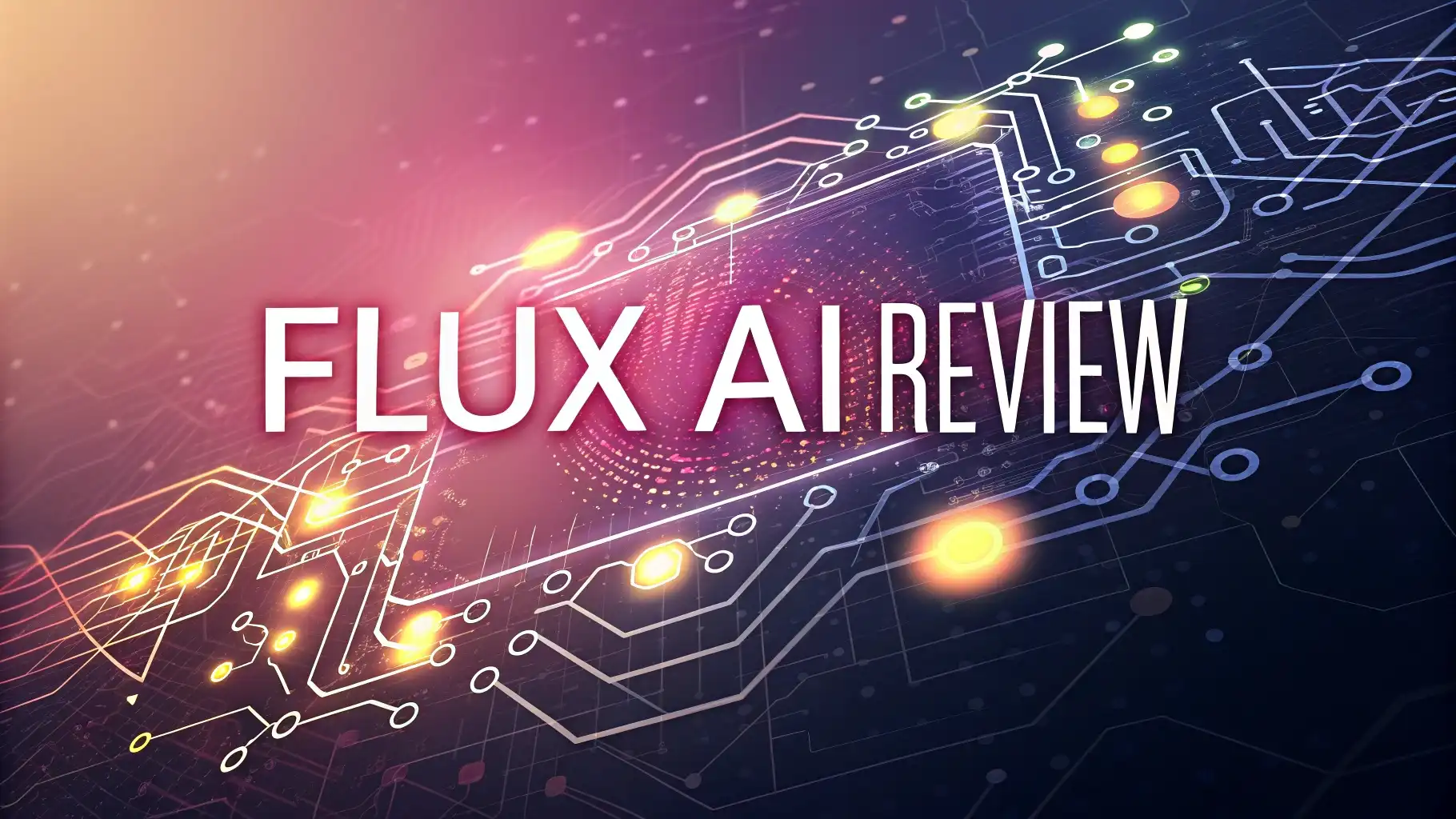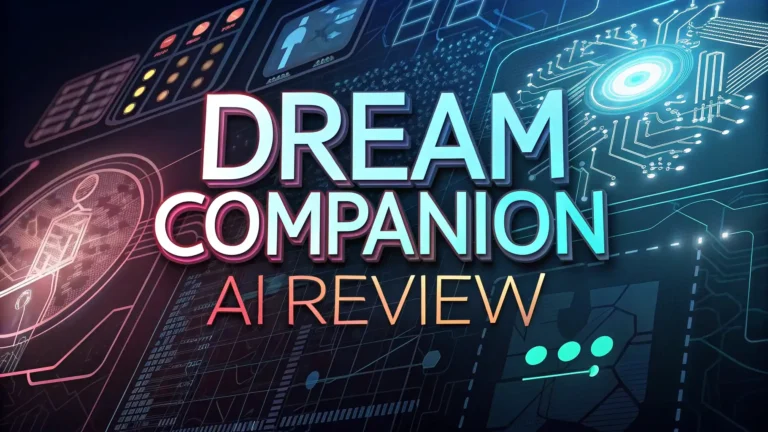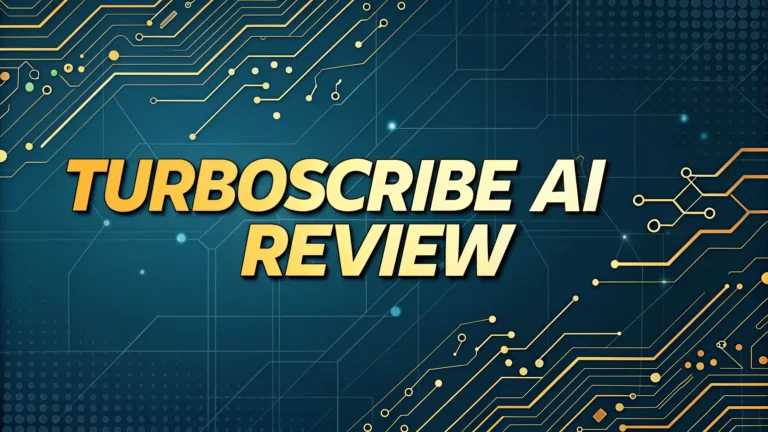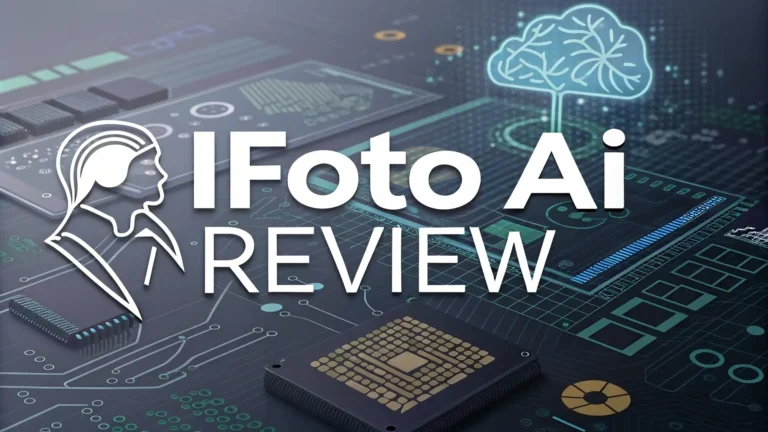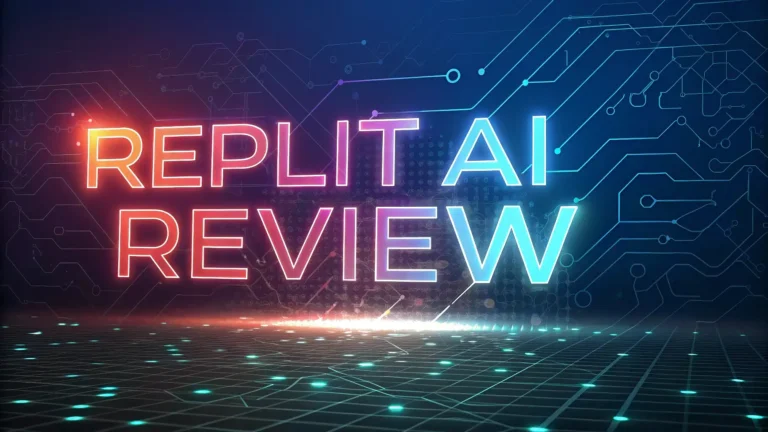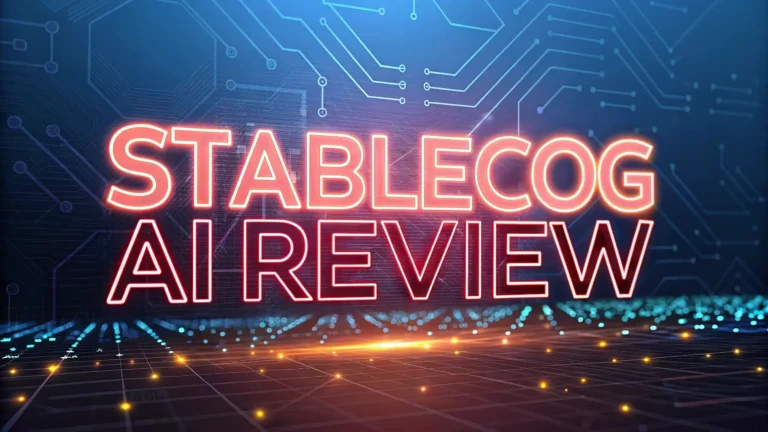Flux AI Review 2025: A Complete Guide
Creating stunning images from text has never been easier, and Flux AI is leading this exciting revolution. This powerful AI image generator has captured the attention of creators worldwide with its incredible ability to transform simple text prompts into breathtaking visuals.
The world of AI image generation moves fast, and staying updated with the latest tools matters more than ever. Flux AI stands out among countless options with its unique approach to visual creation.
This comprehensive review explores everything you need to know about Flux AI in 2025, from its core features to pricing plans and real world applications.
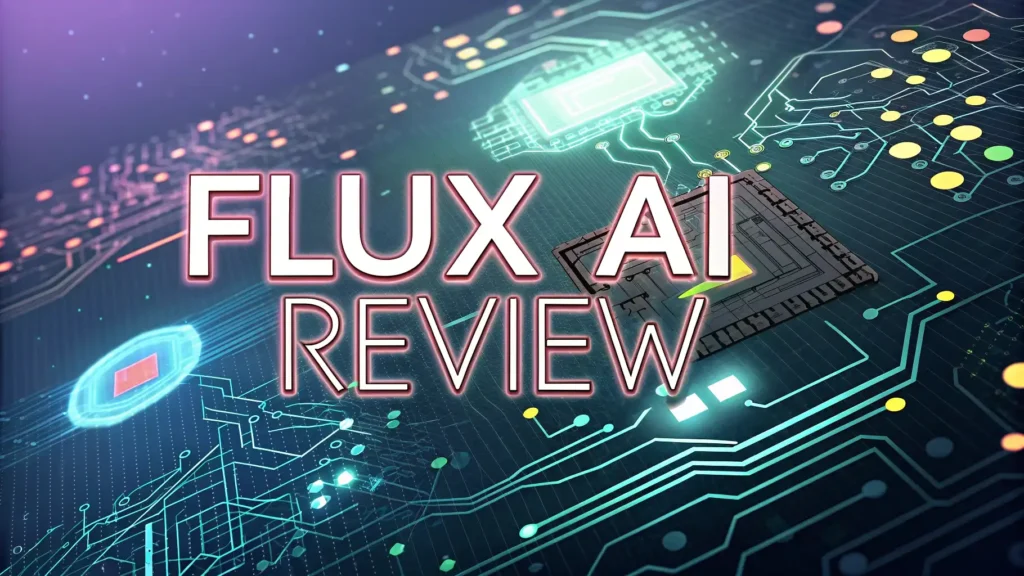
Key Takeaways
- Multiple Model Options: Flux AI offers three distinct models (Pro, Dev, Schnell) for different needs and budgets
- Flexible Pricing: Plans range from free tier with 40 credits to professional packages starting at $9.99
- High Quality Output: Produces photorealistic images with excellent text integration and lighting effects
- User Friendly Interface: Simple text to image process makes it accessible for beginners and professionals
- Strong Competition: Offers competitive alternative to Midjourney and other premium AI image generators
What is Flux AI and How Does It Work
Flux AI represents a breakthrough in artificial intelligence image generation technology. Developed by Black Forest Labs, the same team behind Stable Diffusion, this innovative platform transforms text descriptions into high quality visual content. The system uses advanced machine learning algorithms to understand your text prompts and create corresponding images that match your vision.
The platform operates through a sophisticated process where artificial intelligence analyzes vast datasets of images and text. This training enables Flux AI to understand complex relationships between words and visual elements. When you input a text prompt, the system interprets your description and generates images that accurately reflect your requirements.
Flux AI excels in several key areas including photorealistic human portraits, detailed landscapes, fantasy artwork, and even text integration within images. The platform supports various aspect ratios and image sizes, making it suitable for different creative projects. Users can create everything from social media content to professional marketing materials with remarkable ease and speed.
The technology behind Flux AI continues evolving rapidly. Recent updates have improved image quality, reduced generation times, and expanded creative possibilities. This constant innovation keeps Flux AI at the forefront of AI image generation technology.
Understanding the Three Flux AI Models
Flux AI offers three distinct models designed for different user needs and project requirements. Understanding these options helps you choose the right tool for your specific creative goals and budget constraints.
Flux.1 Pro serves as the flagship model offering premium image quality and exceptional detail. This professional grade option delivers the highest resolution outputs with superior prompt adherence. Commercial users and professional designers prefer Pro for its consistent results and advanced capabilities. The model excels at complex scenes, realistic human portraits, and detailed architectural visualizations.
Flux.1 Dev provides an excellent balance between quality and accessibility. Designed for non commercial use, this model offers similar image quality to Pro while maintaining faster generation speeds. Researchers, students, and hobbyists find Dev perfect for experimentation and creative exploration. The model handles most creative tasks effectively without the premium pricing of Pro.
Flux.1 Schnell prioritizes speed and efficiency over maximum detail. Licensed under Apache 2.0, this model offers free access for personal projects and local development. While image quality may be slightly lower than its siblings, Schnell produces results quickly and efficiently. Content creators working on tight deadlines often choose Schnell for rapid prototyping and concept development.
Comprehensive Feature Analysis
Flux AI’s feature set demonstrates why it has become a leading choice among AI image generators. The platform combines powerful technology with user friendly design to deliver exceptional creative tools.
Advanced Text Integration stands out as one of Flux AI’s strongest capabilities. Unlike many competitors that struggle with readable text in images, Flux AI consistently produces clear, properly formatted text elements. This feature proves invaluable for creating logos, signage, product mockups, and marketing materials. The system understands context and placement, ensuring text appears natural within the generated scenes.
Photorealistic Human Generation represents another area where Flux AI excels. The platform creates convincing human portraits with accurate facial features, natural expressions, and realistic lighting. Skin textures, hair details, and clothing appear remarkably lifelike. This capability makes Flux AI popular for stock photography, character design, and social media content creation.
Environment and Lighting Mastery sets Flux AI apart from many competitors. The system demonstrates sophisticated understanding of light physics, shadow casting, and atmospheric effects. Whether creating indoor scenes with warm lighting or outdoor landscapes with natural sunlight, Flux AI consistently delivers believable and visually appealing results.
Versatile Style Generation allows users to explore countless artistic approaches. From photorealistic renders to cartoon illustrations, anime characters to architectural visualizations, Flux AI adapts to diverse creative requirements. The platform understands style keywords and applies them consistently across generated images.
Pricing Plans and Value Proposition
Flux AI’s pricing structure accommodates creators across different budget ranges and usage levels. The platform offers multiple options designed to match various professional needs and project scales.
Free Tier provides 40 credits for new users, allowing experimentation without financial commitment. Daily check ins reward users with 20 additional credits, encouraging regular platform engagement. This approach helps newcomers understand Flux AI’s capabilities before investing in paid plans.
Standard Plan costs $9.99 monthly and includes 5000 credits. This option suits casual creators and small business owners who need regular access to AI image generation. The credit allocation typically covers moderate usage patterns including social media content and basic marketing materials.
Popular Plan priced at $19.99 monthly offers 13000 credits for more demanding creative workflows. Professional designers and content creators often choose this tier for its generous credit allocation and full feature access. The plan provides excellent value for users requiring consistent image generation capabilities.
Professional Plan at $29.99 monthly delivers 21000 credits for heavy users and commercial applications. Agencies, large content teams, and businesses with extensive visual content needs benefit from this comprehensive package. The plan ensures adequate resources for demanding production schedules.
Credit consumption varies based on model selection and image complexity. Flux.1 Pro requires more credits per generation than Dev or Schnell models. Understanding this relationship helps users optimize their credit usage and select appropriate plans.
User Experience and Interface Design
Flux AI prioritizes user experience through intuitive interface design and streamlined workflows. The platform removes technical barriers that often intimidate newcomers to AI image generation.
Simple Prompt Input forms the core of the user experience. Users describe their desired image using natural language, and Flux AI interprets these descriptions accurately. The system responds well to detailed prompts while also handling simple requests effectively. Clear placeholder text and example prompts guide new users through their first generations.
Model Selection Interface allows easy switching between Pro, Dev, and Schnell options. Visual indicators show credit costs and expected generation times for each model. This transparency helps users make informed decisions based on their project requirements and budget constraints.
Generation History maintains a record of previous creations, enabling users to revisit successful prompts and iterate on promising concepts. The history feature includes original prompts, making it easy to recreate or modify previous generations. Users can organize their history into folders for better project management.
Real Time Preview shows generation progress and estimated completion times. This feature reduces uncertainty and helps users plan their creative sessions effectively. Queue management allows multiple generations to process simultaneously, improving overall efficiency.
Download and Sharing Options provide flexible ways to export and distribute generated images. Multiple resolution options accommodate different use cases from web graphics to print materials. Direct sharing to social media platforms streamlines content distribution workflows.
Image Quality and Performance Comparison
Flux AI’s image quality stands among the best in the current AI image generation landscape. Comprehensive testing across various prompt types reveals consistent performance and impressive results.
Photorealism Excellence emerges as Flux AI’s greatest strength. Generated images often appear indistinguishable from professional photography. Facial features maintain proper proportions and realistic textures. Lighting effects create convincing shadows and highlights that enhance overall image believability.
Detail Preservation remains consistent across different image elements. Fine textures like fabric weaves, skin pores, and surface materials render with remarkable accuracy. This attention to detail makes Flux AI suitable for close up shots and detailed product visualizations.
Color Accuracy produces vibrant yet natural color palettes. The system avoids oversaturation while maintaining visual appeal. Color relationships appear harmonious and professionally balanced. This quality proves essential for brand consistent marketing materials and commercial applications.
Composition Understanding demonstrates sophisticated grasp of visual design principles. Generated images follow rule of thirds, maintain balanced elements, and create compelling focal points. This compositional awareness reduces the need for post generation editing and cropping.
When compared to competitors like Midjourney and DALL-E, Flux AI holds its own across most quality metrics. While Midjourney may excel in artistic stylization, Flux AI often produces more photorealistic results. Speed advantages over premium competitors make Flux AI attractive for time sensitive projects.
Creative Applications and Use Cases
Flux AI serves diverse creative industries and applications, demonstrating remarkable versatility across professional and personal projects.
Marketing and Advertising teams leverage Flux AI for rapid concept development and visual brainstorming. The platform enables quick iteration through multiple design directions without expensive photography shoots. Product mockups, lifestyle imagery, and promotional graphics generate efficiently. Social media managers create engaging visual content that aligns with brand guidelines and campaign objectives.
Content Creation benefits enormously from Flux AI’s capabilities. Blog post headers, video thumbnails, and social media posts generate quickly and cost effectively. YouTubers and podcasters create custom artwork without relying on stock photography. Newsletter designers produce unique visuals that enhance reader engagement and brand recognition.
Game Development and Entertainment industries use Flux AI for concept art and character design. Environmental concepts, creature designs, and atmospheric scenes help development teams visualize game worlds. The platform accelerates pre production phases and reduces reliance on traditional concept artists for initial explorations.
Education and Training applications include creating custom illustrations for learning materials. Teachers generate specific visuals that align with curriculum requirements. Training manuals benefit from custom diagrams and explanatory images. Educational technology companies create engaging visual content for digital learning platforms.
E commerce and Product Design utilize Flux AI for product visualization and lifestyle imagery. Online retailers create appealing product presentations without expensive photography setups. Fashion brands explore design concepts and marketing visuals. Home decor companies visualize products in realistic room settings.
Flux AI vs Midjourney: Head to Head Analysis
The competition between Flux AI and Midjourney represents one of the most significant debates in AI image generation. Both platforms offer unique advantages that appeal to different user types and creative requirements.
Image Quality Comparison reveals interesting differences between the platforms. Midjourney excels in artistic stylization and creates images with distinctive aesthetic appeal. The platform often produces more visually striking results that feel intentionally designed. Flux AI focuses on photorealism and accuracy, generating images that appear more like professional photography.
Pricing and Accessibility heavily favor Flux AI. While Midjourney requires subscription plans starting around $10 monthly, Flux AI offers meaningful free tier access. The credit based system provides more flexibility than Midjourney’s unlimited generation model. Users who need occasional image generation find Flux AI more cost effective.
User Interface Differences reflect different design philosophies. Midjourney operates through Discord integration, which some users find cumbersome but others appreciate for community features. Flux AI provides traditional web interface that feels more familiar to most users. The direct upload and generation process eliminates learning curve associated with Discord commands.
Prompt Understanding shows varied strengths between platforms. Midjourney often interprets artistic and stylistic descriptions more creatively. Flux AI demonstrates superior accuracy with literal descriptions and technical specifications. Complex scene descriptions typically yield more predictable results with Flux AI.
Commercial Usage Rights favor Flux AI for many business applications. The platform provides clear licensing terms and commercial usage rights. Midjourney’s terms of service include more restrictions that may complicate commercial projects. This clarity makes Flux AI more attractive for business users and professional applications.
Advanced Tips for Better Results
Maximizing Flux AI’s potential requires understanding how to craft effective prompts and optimize generation settings. These techniques help users achieve consistently better results.
Prompt Engineering Fundamentals form the foundation of successful image generation. Specific descriptions produce better results than vague requests. Instead of “a beautiful landscape,” try “a serene mountain lake reflecting snow capped peaks during golden hour sunset.” Including details about lighting, mood, and composition guides the AI toward your vision.
Style and Technique Keywords dramatically influence output quality. Terms like “professional photography,” “studio lighting,” or “cinematic composition” improve technical quality. Artistic style references such as “watercolor painting” or “digital art” help achieve desired aesthetic approaches. Camera and lens specifications like “shot with 85mm lens” or “wide angle perspective” control technical aspects.
Negative Prompting helps avoid unwanted elements in generated images. Specifying what you don’t want can be as important as describing desired elements. Common negative prompts include “blurry,” “low quality,” “distorted,” or specific objects you want to exclude. This technique proves especially useful for maintaining consistency across multiple generations.
Aspect Ratio Selection significantly impacts composition and usage suitability. Square formats work well for social media posts and profile images. Landscape orientations suit website headers and presentation backgrounds. Portrait formats excel for mobile content and vertical social media platforms. Choosing appropriate ratios from the start saves time on cropping and reformatting.
Iterative Refinement involves generating multiple variations and gradually improving prompts. Start with basic descriptions and add details based on initial results. Note which keywords produce desired effects and incorporate them into future prompts. This systematic approach builds personal prompt libraries for consistent results.
Common Challenges and Solutions
While Flux AI performs impressively, users occasionally encounter challenges that require specific approaches and solutions. Understanding these issues helps maximize platform effectiveness.
Inconsistent Style Across Generations represents a common frustration for users creating related content. The solution involves developing detailed style guides within prompts. Include consistent lighting descriptions, color palette specifications, and artistic technique references. Creating template prompts for ongoing projects ensures visual consistency across multiple generations.
Text Integration Problems occasionally produce garbled or incorrect text within images. This challenge requires specific text formatting within prompts. Enclose desired text in quotation marks and specify placement clearly. For complex text integration, consider generating base images first and adding text through post processing software.
Complex Scene Rendering sometimes produces cluttered or confusing compositions. Breaking complex prompts into simpler components often improves results. Generate individual elements separately and combine them using image editing software. This approach provides more control over final composition and element placement.
Credit Optimization concerns users working within budget constraints. Model selection strategy becomes crucial for credit efficiency. Use Schnell for concept development and iteration, then switch to Pro for final high quality versions. This approach maximizes creative exploration while conserving credits for important final outputs.
Hardware Performance Issues may affect users with slower internet connections. Batch processing helps manage multiple generations efficiently. Queue several prompts simultaneously rather than waiting for individual completions. This strategy optimizes bandwidth usage and reduces overall generation time.
Best Alternatives to Consider
While Flux AI offers impressive capabilities, exploring alternatives helps users make informed decisions based on specific needs and preferences. Several platforms provide compelling options for different use cases.
Midjourney remains the primary artistic competitor to Flux AI. Its strength lies in creative interpretation and aesthetic appeal. Users seeking highly stylized, artistic outputs often prefer Midjourney’s approach. The platform excels at fantasy artwork, concept art, and visually striking compositions. However, pricing and interface differences make it less suitable for some users.
DALL-E 3 through ChatGPT provides strong integration advantages for users already within the OpenAI ecosystem. The platform offers excellent prompt understanding and safety features. Commercial usage rights come clearly defined, making it business friendly. However, generation limits and pricing structure may restrict heavy users.
Leonardo AI offers specialized features for game development and character design. The platform provides excellent control over character consistency and style variations. Training custom models allows personalized artistic approaches. The interface caters specifically to game developers and digital artists.
Adobe Firefly integrates seamlessly with Creative Cloud applications. Professional designers already using Adobe software benefit from native integration. The platform emphasizes commercial safety and copyright compliance. However, image quality may lag behind specialized AI image generators.
Stable Diffusion variants provide complete control for technically minded users. Local installation eliminates usage restrictions and ongoing costs. Custom model training enables specialized applications. However, technical complexity makes it unsuitable for casual users or those seeking simple solutions.
Future Developments and Roadmap
Flux AI continues evolving rapidly with regular updates and feature additions. Understanding the development trajectory helps users plan long term creative strategies and budget allocations.
Model Performance Improvements represent ongoing development priorities. Generation speed optimizations reduce waiting times while maintaining quality standards. Memory efficiency updates enable larger image resolutions and more complex scene rendering. These technical improvements enhance user experience without requiring workflow changes.
New Model Variations expand creative possibilities and use case coverage. Specialized models for specific industries or artistic styles may emerge. Video generation capabilities could extend Flux AI beyond static images. These additions would position the platform as a comprehensive creative tool rather than single purpose image generator.
Interface Enhancements focus on improving user experience and workflow efficiency. Advanced prompt building tools may guide users toward better results. Collaboration features could enable team based creative projects. Mobile application development would extend platform accessibility to smartphone and tablet users.
Integration Opportunities with popular creative software and platforms continue expanding. API access enables developers to build custom applications and workflows. Direct integration with content management systems and social media platforms streamlines publishing workflows. These connections reduce friction between generation and distribution phases.
Pricing Evolution may introduce more flexible options for different user types. Pay per use models could benefit occasional users while enterprise packages serve large organizations. Student discounts and educational licensing might expand platform accessibility for learning environments.
Getting Started with Flux AI
Beginning your Flux AI journey requires understanding the setup process and initial best practices. Following these steps ensures smooth onboarding and early success with the platform.
Account Creation starts with visiting the official Flux AI website and registering for a new account. Email verification activates your account and grants access to the free tier credits. Take advantage of daily check in bonuses to accumulate additional credits while learning the platform. Early experimentation with free credits helps you understand capabilities before committing to paid plans.
First Generation Tests should focus on simple prompts to understand basic functionality. Try straightforward descriptions like “a red sports car in a city street” or “a cozy coffee shop interior.” These basic tests reveal how Flux AI interprets different types of descriptions. Note which keywords produce desired effects and build your personal prompt vocabulary.
Model Experimentation helps identify which version suits your typical projects. Generate the same prompt across Pro, Dev, and Schnell models to understand quality and speed differences. This comparison reveals value propositions for each option and guides future model selection. Document credit consumption rates for different models to optimize budget allocation.
Community Resources provide valuable learning opportunities and inspiration. Join user forums and social media groups focused on AI image generation. Study successful prompts shared by experienced users and adapt techniques to your projects. Community feedback accelerates learning and helps avoid common beginner mistakes.
Workflow Development becomes important as you progress beyond basic experimentation. Establish consistent folder organization for generated images and maintain prompt libraries for future reference. Develop templates for recurring project types to streamline repetitive tasks. This systematic approach improves efficiency and creative consistency.
Frequently Asked Questions
Is Flux AI completely free to use?
Flux AI offers a free tier with 40 credits for new users plus daily check in bonuses, but most usage requires paid credits.
Which Flux model should I choose for professional work?
Flux.1 Pro provides the highest quality and detail level, making it ideal for commercial and professional applications.
How does Flux AI compare to Midjourney in terms of quality?
Flux AI excels at photorealistic images while Midjourney focuses more on artistic stylization and creative interpretation.
Can I use Flux AI generated images for commercial purposes?
Yes, Flux AI provides clear commercial usage rights, especially with paid plans and the Pro model.
What happens if I run out of credits?
You can purchase additional credits through various pricing plans or wait for daily check in bonuses to accumulate more free credits.
Does Flux AI work well with text integration in images?
Yes, Flux AI demonstrates superior text integration capabilities compared to many competitors, producing clear and readable text elements.
How long does it take to generate an image?
Generation times vary by model, with Schnell being fastest, Dev offering moderate speed, and Pro taking longer for higher quality results.
Can I generate images in different aspect ratios?
Yes, Flux AI supports various aspect ratios including square, landscape, and portrait orientations for different use cases.

